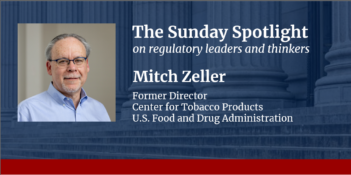
Scholar suggests that recent shifts in administrative law will matter less than critics fear and supporters hope.
Many scholars and commentators consider Loper Bright Enterprises v. Raimondo the most significant administrative-law decision since Chevron U.S.A. v. Natural Resources Defense Council—the very case it expressly overruled. In Loper Bright, the U.S. Supreme Court held that judges—once required under Chevron to defer to reasonable agency interpretations of ambiguous statutes—bear sole responsibility for determining the “single, best meaning” of the law.
Loper Bright, one scholar writes, was “a legal earthquake” that “has shaken the ground beneath the administrative state.” Critics claim that Loper Bright, the product of an “imperial Supreme Court,” will have the practical effect of hamstringing administrative agencies. Its supporters, however, view Loper Bright as a watershed decision ending a 40-year “era of judicial abdication” in administrative law.
In an article in the Supreme Court Review, Adrian Vermeule of Harvard Law School maintains that the significance of Loper Bright has been overstated. Although many scholars herald a revolution in administrative law, Vermeule argues that Loper Bright marks a rhetorical shift masking underlying continuity with existing doctrine.
Vermeule contends that the so-called Loper Bright revolution is ultimately “marginal” because its core holding—that judges must “always and everywhere” determine the meaning of a statute—is limited in three significant ways.
First, because the majority preserves Skidmore v. Swift & Co., a pre-Chevron Supreme Court decision, courts may still accept agency interpretations with “the power to persuade.” Although Skidmore requires courts to evaluate an agency’s reasoning rather than defer by default, Vermeule explains that, in practice, the doctrine still permits judges to defer to agency expertise.
Vermeule next argues that Loper Bright functionally preserves National Labor Relations Board v. Hearst Publications. Hearst, Vermeule explains, requires courts to defer to agency expertise in applying broad statutory terms to complex facts. He contends that the Loper Bright majority “shunts” Hearst deference “into arbitrariness review,” classifying agency adaptation of legal standards to real-world circumstances as policymaking—relabeling, not eliminating, the doctrine.
The third and most significant limitation of Loper Bright’s holding, Vermeule writes, is the majority’s recognition that a statute’s “single, best reading” may reflect congressional intention to grant agencies the discretion necessary to “fill in the details of statutory gaps or ambiguities.” As a result, Vermeule explains, “some large but uncertain fraction” of agency statutory interpretation once covered by Chevron will—restyled, after Loper Bright, as delegated discretion—continue to receive de facto deferential treatment from courts.
“Deference in the old language,” Vermeule summarizes, becomes “delegated discretion in the new.”
Vermeule further observes that nothing in the “single, best reading” approach precludes implied delegations of discretionary authority to agencies. He notes that, as a general legal principle, “what a legislature may do explicitly, it can do implicitly.” Although the majority rejects the Chevron-style idea that delegation can be implied “wholesale,” Vermeule sees nothing in Loper Bright that prevents judges from recognizing implied delegations “retail”—on a case-by-case basis.
Thus the core disagreement between the Loper Bright majority and dissent, Vermeule explains, is whether ambiguous statutes presumptively empower agencies, or if courts must first recognize a delegation of authority. Yet this may be a distinction without a practical difference: Vermeule notes that Chevron deference—contingent on a judicial finding of statutory ambiguity—already required case-by-case application by courts.
Vermeule contends that the possibility of express and implied delegations of interpretive discretion to agencies, combined with the continued relevance of Skidmore and Hearst deference, creates a “rather large domain” in which courts will reach familiar outcomes under a new label. Doctrinally, then, Vermeule observes that “there is less to Loper Bright than meets the eye.”
Vermeule acknowledges that it is, of course, impossible to predict with certainty the effects of such a recent decision. And even if Loper Bright’s effects are in large part symbolic, they need not be trivial. “Symbols,” Vermeule notes, can be “powerful things.” Vermeule muses that Loper Bright’s most immediate impact may be to express a “mood”—a kind of rhetorical “background music” emboldening lower courts to withhold deference in marginal or exceptional cases.
But Vermeule maintains that this mood will matter little in most cases. He doubts that many judges, aware of “how little they know,” will independently review “broad and open-ended” statutory delegations without deferring to agency expertise. Vermeule argues that few judges will feel confident addressing varied and complex technical problems on their own—and so, in most cases, they will not.
Loper Bright, Vermeule concludes, will matter less than its critics fear and its supporters hope.



